Pie-spiration 🥧 in San Diego!
A Nutella crostata in a Little Italy cafe sparks a home version, plus diving into local history, finding a fresh pasta source and a new recipe
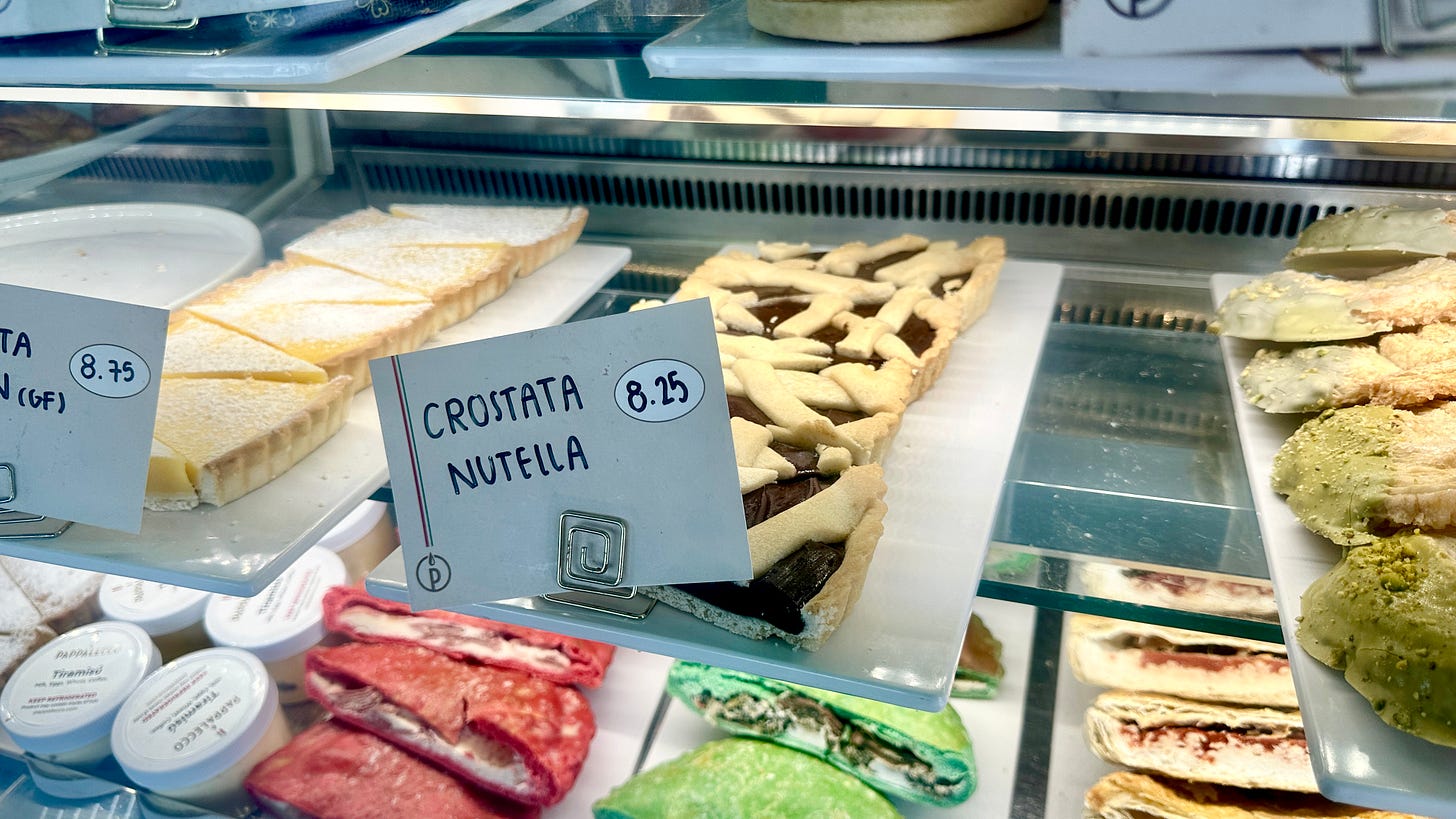
On a recent visit to San Diego, we met my nephew Jon and his family in a small sidewalk cafe called Pappalecco in a charming area of town called Little Italy that was about a mile from our hotel.
In the display case were a variety of lunch items, snacks and desserts—all very tempting. But what caught my eye immediately was the Crostata Nutella—wedges of a sturdy-looking tart with a chocolate-brown filling and pale strips of crust criss-crossing the top.

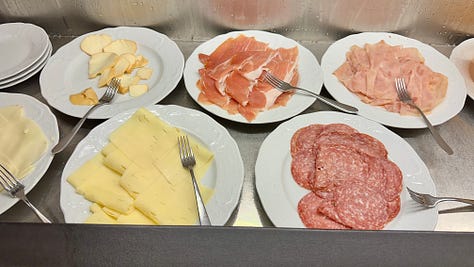
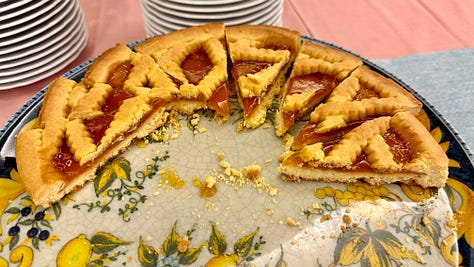
It brought back memories of our trip to Sicily in May and the plentiful breakfast offerings at the hotel near our B&B in Taormina where our hosts directed us each morning. (An uphill climb, plus some stairs, helped us earn our calories!) The choices included not only croissants, rolls, cheeses and meats, but also two types of crostatas—Nutella and jam—that were simply delicious, a bit like a combo crunchy shortbread cookie and pie! I was left wondering how I might make them at home.
Nuts about Nutella
I finally got around to it last week. With so much traveling, hot weather, and a lot of distraction (quite a convention in Chicago last week, wasn’t it?!), there hadn’t been a lot of baking going on in my kitchen. But a Nutella crostata was calling my name. I made it using a recipe I discovered online, with only a few changes. You can find it by clicking here, with some further notes at the bottom of this post.

Why Nutella, you ask? First of all, that combo of chocolate and hazelnuts is addictive—you can spread it on toast, pancakes, apple slices—your thumb! Or you can just spoon it out of the container directly into your mouth. And that label with bright red lettering, with that one little black “n” at the beginning, is impossible to ignore, not to mention the image of the bread slathered with shiny chocolate spread. Yum!
Then, there’s my husband Jeff’s obsession with Nutella crêpes, which we’ve sampled in France any time we’re lucky enough to visit—and also here when we happen upon the rare crêperie.
And then finally, when I checked out the Nutella website for further information, I discovered that 2024 is the 60th anniversary of the invention of this spread—at least in a version close to its current form.
From its humble beginnings in a bakery in Alba, Italy when the owner Pietro Ferraro, had the bright idea to respond to a wartime cocoa shortages by mixing the chocolate powder with sugar and hazelnuts to create a paste called Giandujot that he sold in blocks, it has grown into a global behemoth.
These days more than 365,000 tons of the nutty-chocolatey stuff are sold in 160 countries annually, with as much as a quarter of the world’s hazelnuts devoted to its production.12 There’s even a World Nutella Day, and of course there are countless recipes, including for Nutella crêpes (maybe next on my list!).

San Diego’s Little Italy
One thing I’ve missed on past visits to San Diego is that it, like San Francisco, Manhattan, Boston, Rhode Island, Philadelphia and a number of other cities, it has its own Little Italy. These are neighborhoods originally settled by Italian immigrants that have to varying degrees retained links to their heritage, language and food.
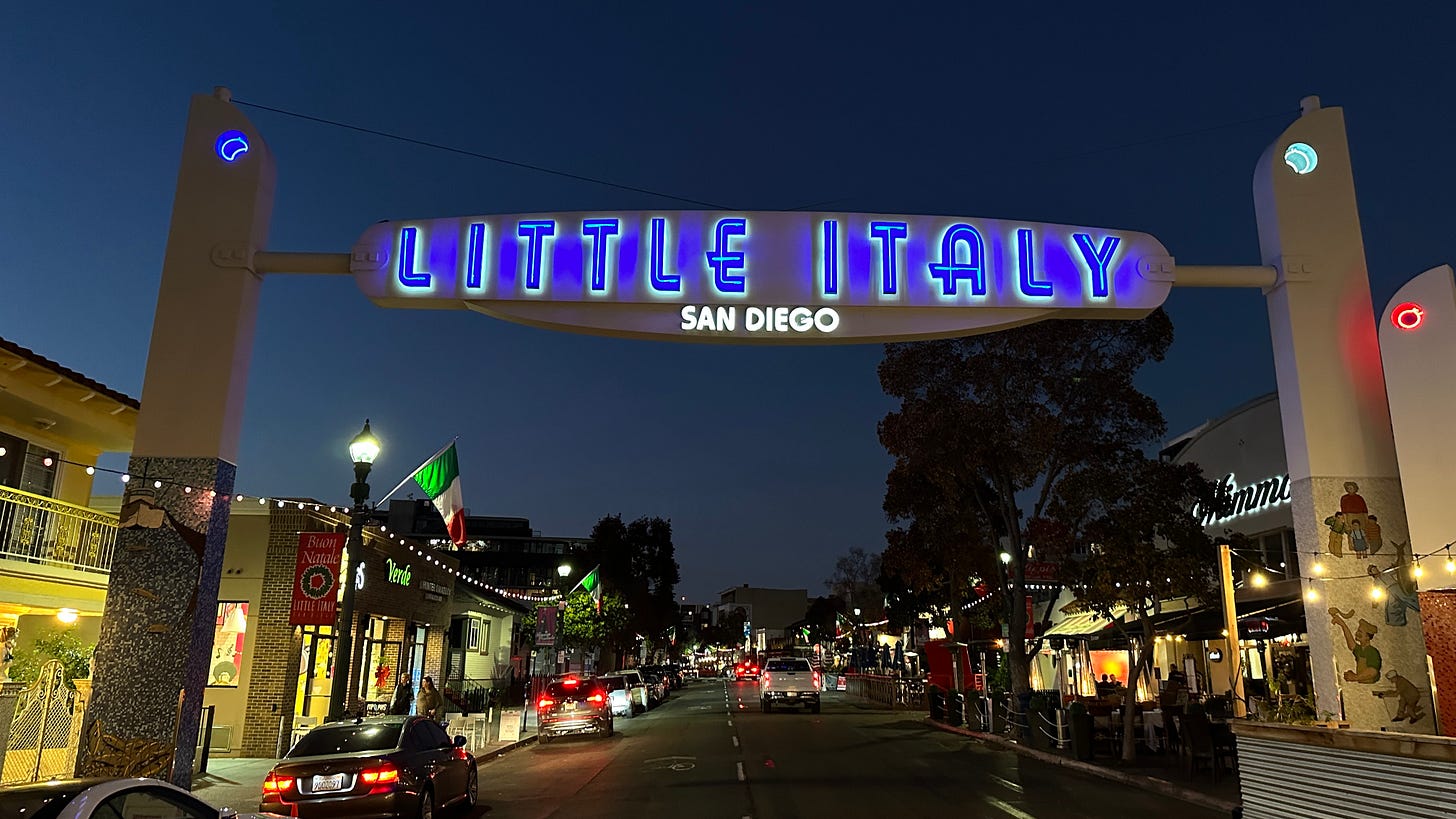
The historical roots of San Diego’s Little Italy date back to its time as part of a flourishing tuna fishing and canning industry that spanned from the early 20th century to the late 1960s and helped cement the city’s reputation as “The Tuna Capital of the World.”
“Fishing boats and canneries lined Little Italy’s waterfront. Tuna became San Diego’s third largest industry, behind the Navy and aerospace, as Americans were consuming over one billion pounds of tuna a year. By the mid-1930s, the canneries employed more than 1,000 people.”
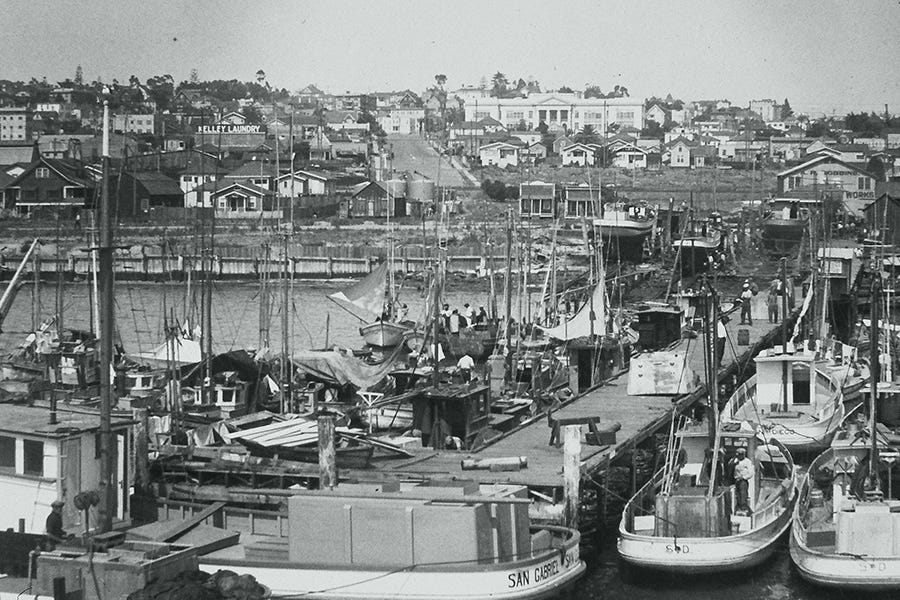
Italian immigrants, primarily from the Italian Riviera and Sicily, along with others from the Portuguese Azores and Japan, helped built this industry, but changes and challenges in the business, along with the arrival of the Interstate 5 to gobble up more than a third of Little Italy, led to a 30-year decline in the area that had at one time been home to more than 6,000 Italian families.3
Reviving the area became the mission of a nonprofit group of businesses, property owners and residents in 1996. These days it seems to be once again a thriving area that the Little Italy Association of San Diego describes as “not only a model urban neighborhood for the City of San Diego, but is also … a model for the handful of Little Italys remaining throughout the country.”
Of course it was not so much the history as the food that drew us to this particular Little Italy, along with several scheduled visits with family.
My mother-in-law Judy Graham raved about Assenti’s Pasta. At her suggestion, I brought back several pounds of pasta, including her favorites, lemon basil fettuccini and chipotle fettuccini.
“We’ve been buying it for years,” she said. “We love all the different flavors.”

Massimo Assenti, the young man behind the counter when we visited, told me that his grandparents, immigrants from San Benedetto del Tronto, in the Riviera delle Palm or Marche region on Italy’s east coast, started the business in 1981 using recipes from Massimo’s grandmother, Adriana Sabatini Assenti. She was already 55 years old when the food she had learned to make as a little girl became the backbone of the new business. The pasta is still made the same way as it has been for almost 44 years, with manufacturing and production managed by six or seven guys in the back, Massimo told me. Here’s a video from Assenti’s website that makes me hungry just watching it!
I counted 38 types of fresh pasta and 20 kinds of filled pasta listed on Assenti's website, plus a large variety of frozen house-made sauces, lasagnas and other prepared foods, as well as biscotti and other sweets, also made in-house. Some of products were listed as vegan and/or gluten-free! Unfortunately, you actually have to show up in person to pick up the goods—no mail delivery. About 80% of the business is wholesale trade to businesses all over Little Italy and San Diego.
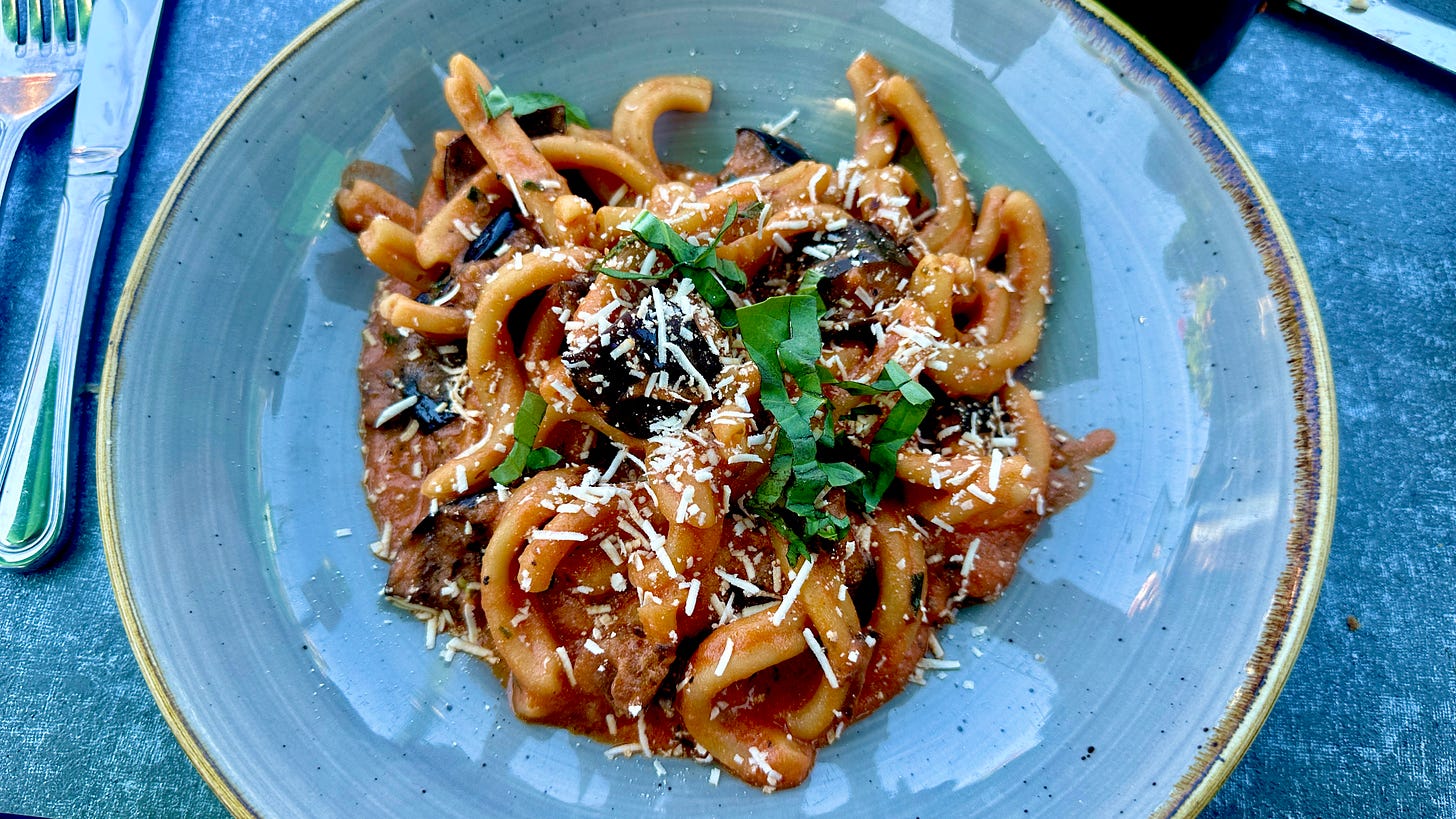
Pasta alla Norma
Having sampled a popular Sicilian dish called Pasta alla Norma on our visit to that beautiful Mediterranean island, I ordered it again at a local restaurant in Little Italy called Civico 1845, where we dined al fresco, served by a patient, cheerful, ponytailed waiter, Vincenzo. With a rich tomato sauce combined with pieces of soft and sumptuous eggplant and a dusting of cheese (typically a good Italian ricotta salata) on top, it was a simple dish and seemed even better than the version I’d tried in Sicily. After purchasing some pasta (I chose medium shells with ridges, but I think fettuccini or rigatoni might have been more traditional) at Assenti’s Pasta, I was determined to make it in my kitchen.
I combined ideas from food writer Mark Bittman on the New York Times website (gift link here), along with one from Cookie + Kate. (Later I discovered a third recipe from Serious Eats writer J. Kenji López-Alt that I may try next).
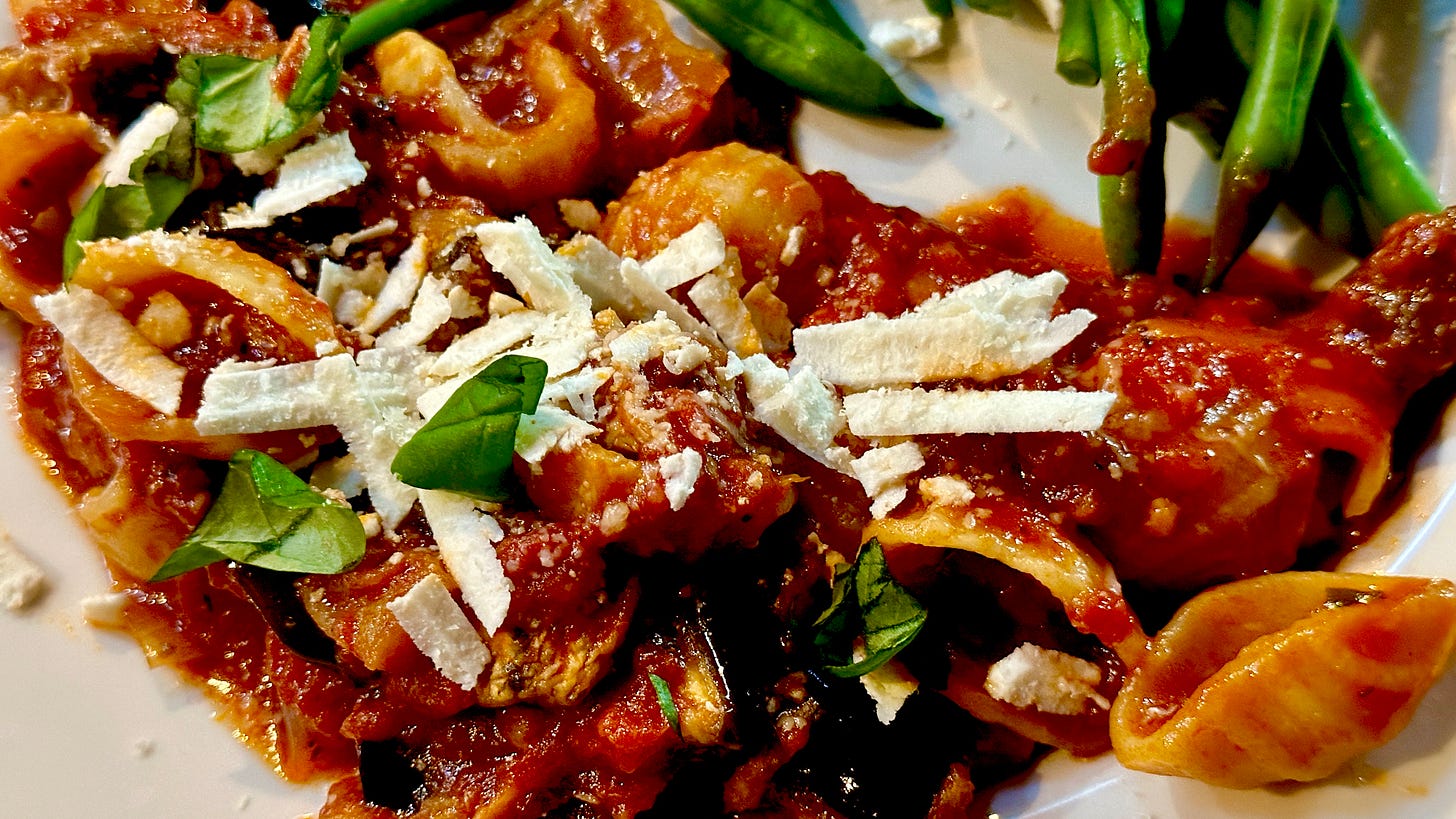
But meanwhile, I attempted to reduce the amount of oil in the recipe by roasting cubed eggplant in the oven after first tossing it with a little oil and salt and made my own pasta sauce based on this recipe. I was pretty pleased with the result, although I thought the eggplant needed to be softer—frying is probably the better way to go.
I also should have read the excellent advice that Assenti has posted on its website entitled “How to Cook Pasta Like a Pro.”
Most of the tips seem like common sense, such as using a pot that’s large enough (at least 10 quarts for a pound of pasta), filling it with the right amount of water (4 to 5 quarts), bringing the water to a rolling boil (except for filled pasta where vigorous boiling water may literally take the stuffing out of it!), and adequately salting your water.
“Pasta loves salt, it needs it,” the website says. “Your pasta water should taste almost as salty ocean – that salty. You should be able to taste the salt in the water.”
To that end, Assenti recommends adding at least 1 heaping tablespoon of regular table salt per pound of pasta. It sounds like a lot, but I’m definitely going to try it next time!
In praise of crostata
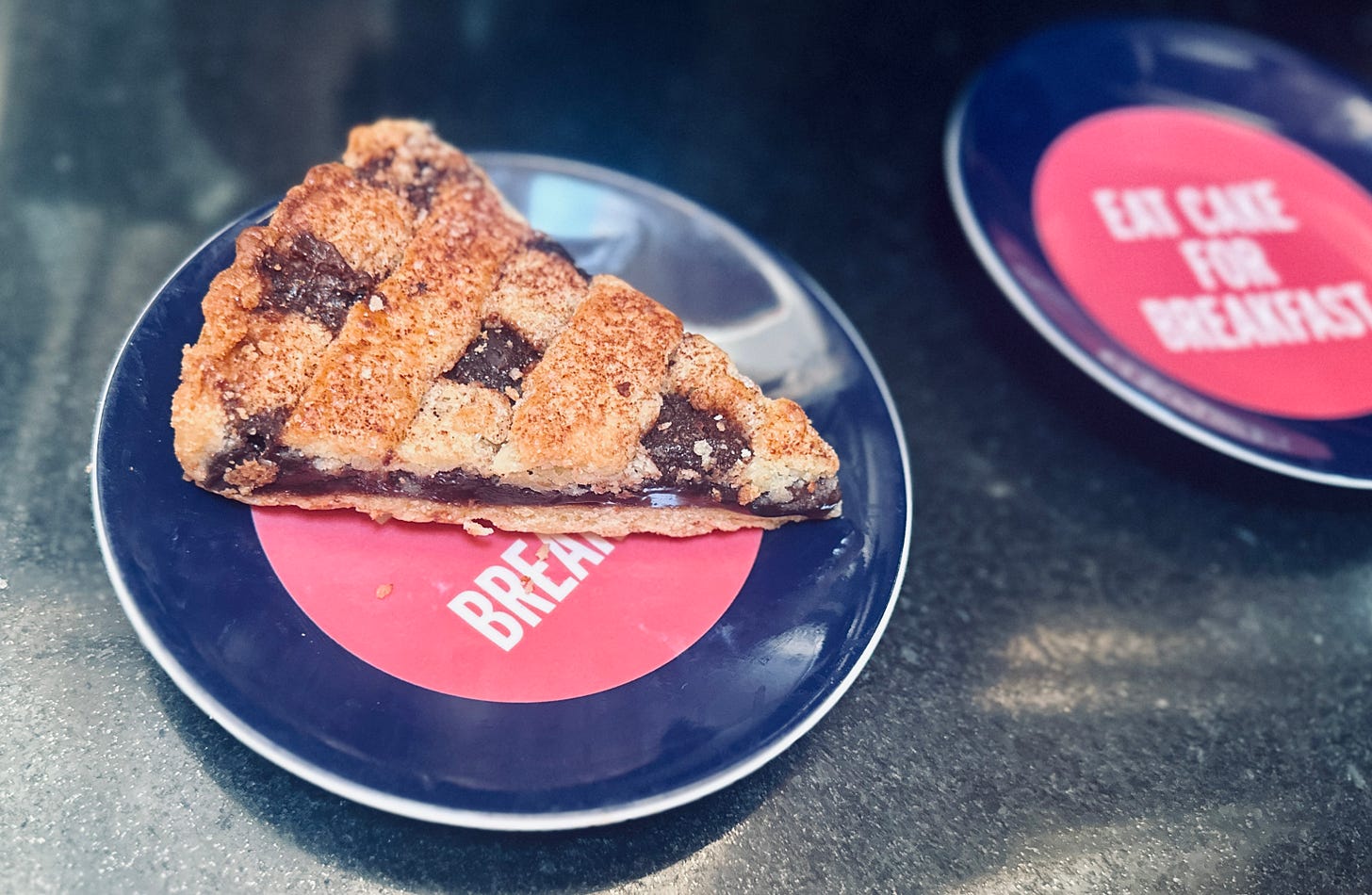
Notes on the recipe I used for the nutella crostata (here’s the link again):
It called for room-temperature butter for the crust, but I prefer using chilled.
The filling mixed 16 ounces of Nutella with a half-cup of cream and 2 tablespoons of melted butter. I thought the additions made the filling particularly rich and fudgy, especially when I put the cooled pie in the fridge—and then stored leftovers in the freezer, well-wrapped.
I’ve seen other recipes that call for a simple filling of straight Nutella. Click here for a link to a recipe that offers that version.
As I’m still obsessed with crostata, I hope to make more varieties—and improve my lattice-making skills, which definitely could use some help! Domenica Marchetti, a fellow blogger here on Substack as well as the talented author of multiple books on Italian cooking, has shared several recipes for crostatas in her cookbooks and on her blog. Among them are an apple crostata that seems perfect for fall and a strawberry cream one (Crostata Cream e Fragola) that sounds like a spectacular flavor combo. Do check out Domenica’s blog here.
And finally, here are some questions for you:
Are you a Nutella fan? If so, do you bake with it, eat it out of the jar or spread it on everything? I’d love to know.
Fall’s a-comin’! Do you have a favorite dessert or dish you’re looking forward to eating and/or making?
Any “Little Italys” near you? If so, are they still very connected to their Italian roots?
Thanks as always for your likes, comments and subscriptions. If you like what you read, please do share it. I write this blog for the love of it, but it does take a fair amount of work, so please let me know what you think.
I hope you’re enjoying summer’s last hurrah! 🎉
See you next time!
❤️Ruth
Luca Cottini, PhD, “Success is Sweet: Ferrero’s Crown Jewel, Nutella, Turns 60,” ExpertFile.com (Villanova University), April 26, 2024, https://expertfile.com/spotlight/9780/success-is-sweet-ferreros-crown-jewel-nutella-turns-60
The Wikipedia entry on Nutella includes information on the percentages of hazelnuts in the spread. Sugar and palm oil, the first two ingredients comprise more than 50%, with hazelnuts only accounting for about 13% in most countries. The percentages in the US supply aren’t listed. https://en.wikipedia.org/wiki/Nutella#:~:text=In%201963%2C%20Ferrero's%20son%20Michele,success%20and%20remains%20widely%20popular.
Sources on the history of San Diego’s Little Italy and the local fishing industry include the following websites: https://www.littleitalysd.com/about/history, https://www.littleitalysd.com/feature/little-italys-resilience-over-the-years, https://en.wikipedia.org/wiki/Little_Italy,_San_Diego#cite_note-gala-5, and https://www.sandiegotunafishing.com/info/articles/a-complete-history-of-san-diego-tuna-fishing




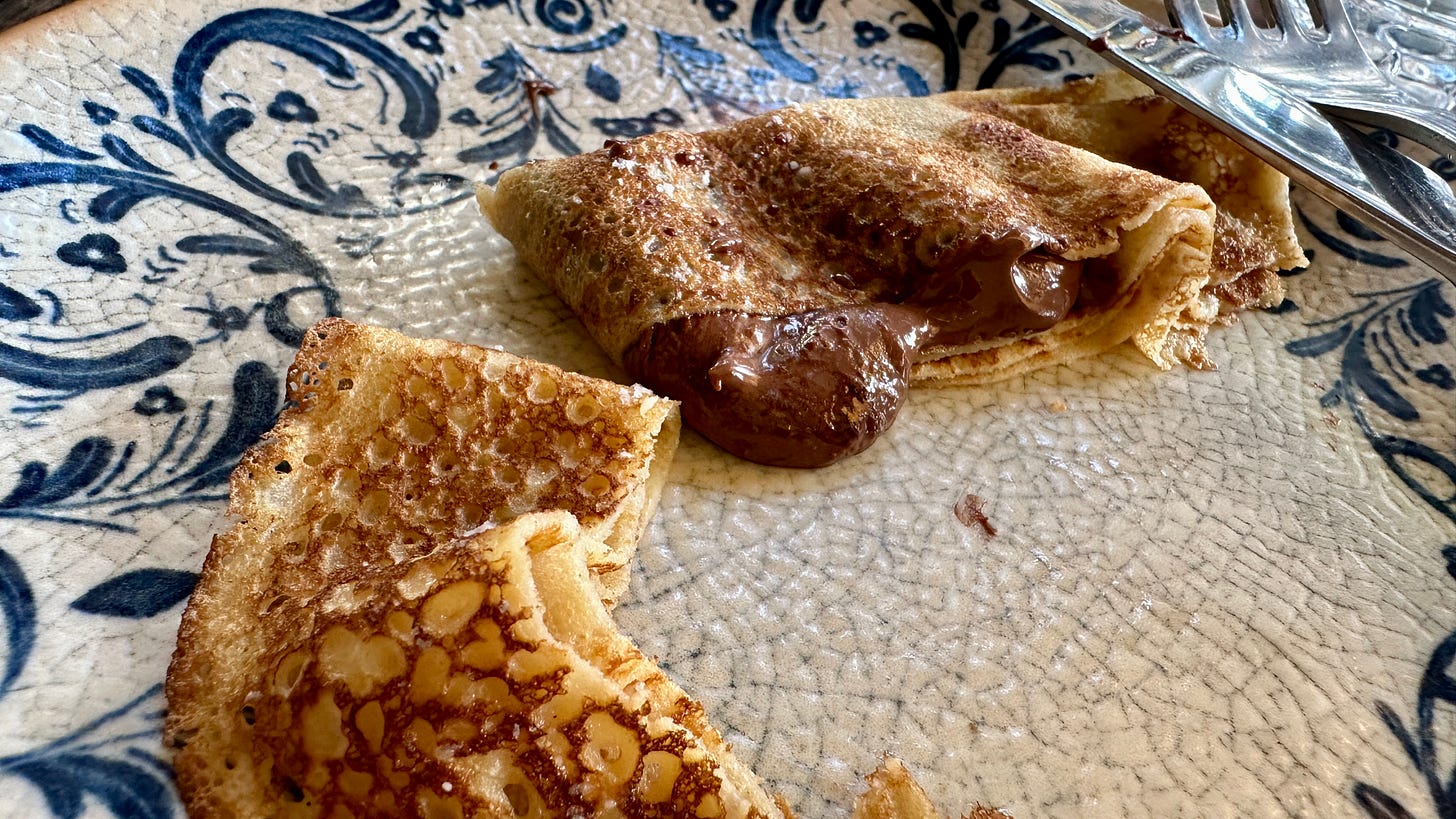
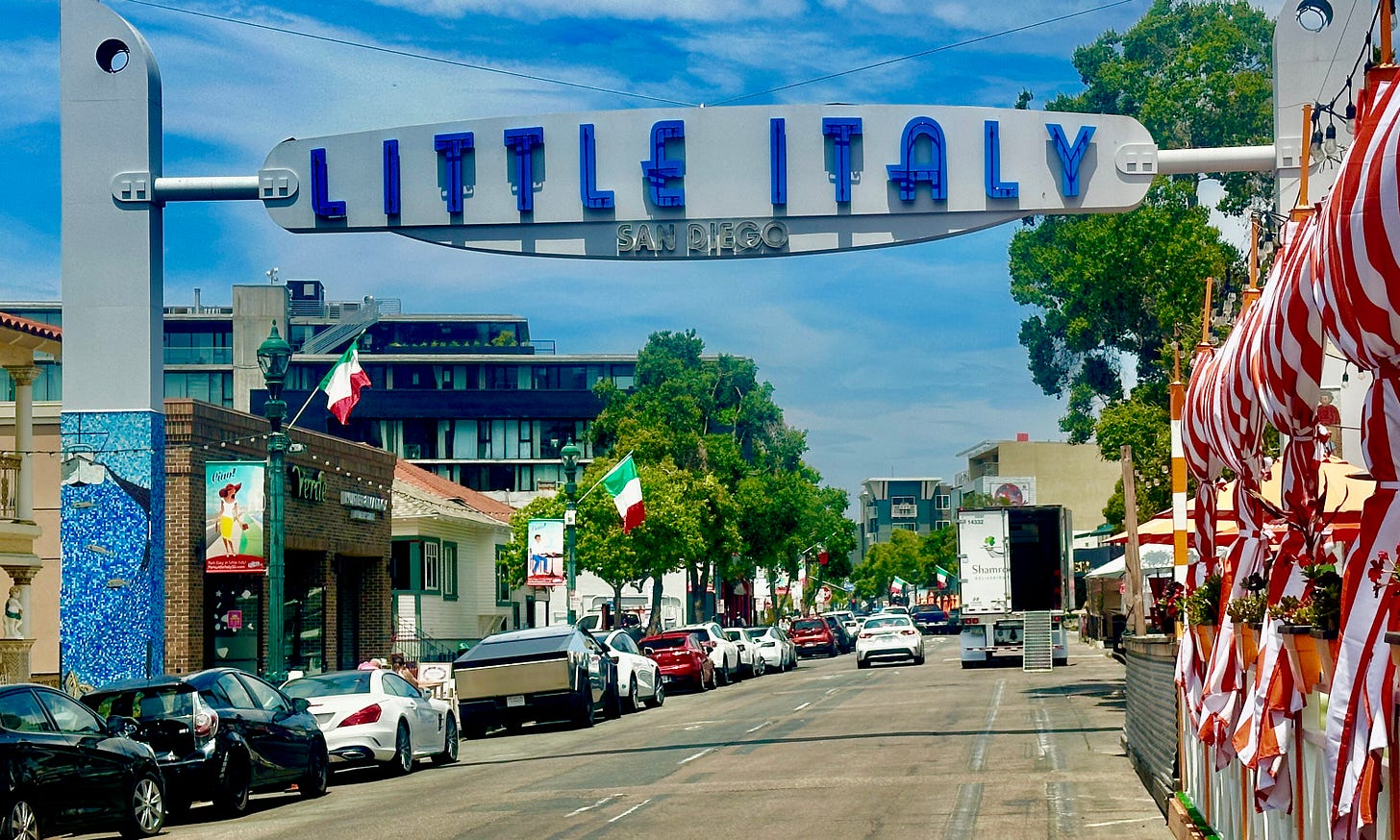
Hi Ruth, thanks so much for the kind mention! Do you know, I think Nutella is one of the few crostata variations I haven't yet made. I like the idea of adding cream and butter to make it more like a ganache. Will give it a go! Also, I'm happy to learn about another Little Italy. I fantasize about taking myself on a tour of all the Little Italys across the US (or what remains of them). Thanks for another fun read.
What a gorgeous crostata you made! I’m nuts about Nutella, straight from the jar or in baked goods. Not sure I have the skills to make this crostata, but the Nutella Rice Krispies treats I debuted earlier this summer were a major hit at a potluck supper.
How have I missed Little Italy all these years?? It’s now on my field trip list.